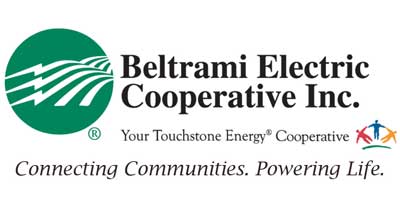There’s been a lot of buzz around going solar, but what about going geothermal?
Solar gets a lot of attention, but have you considered going geothermal? This lesser-known renewable energy source can reduce your energy bills while delivering reliable, efficient heating and cooling year-round.
What is geothermal energy?
Geothermal systems use the steady heat stored beneath the Earth’s surface to warm your home in winter and cool it in summer. Also known as ground-source or water-source heat pumps —they can even help heat your water.
Because the ground stays at a consistent temperature year-round, geothermal systems are highly energy-efficient and renewable.
How does it work?
A geothermal system uses underground pipes, called loops, to move heat between your home and the ground. These loops can be installed horizontally across a large area or drilled vertically into the ground, depending on your yard size and soil type.
Most systems are closed-loop, meaning a water and antifreeze solution circulates through the pipes. In winter, the system pulls heat from the ground and sends it indoors. In summer, it does the opposite—removing heat from your home and releasing it into the ground.
Since geothermal systems move heat rather than generate it, they’re far more efficient than traditional heating and cooling methods.
Why choose geothermal?
Geothermal offers a range of long-term benefits:
- Energy savings: It can cut energy bills by up to 50%. Savings grow over time to offset higher upfront installation costs.
- Reliable: It provides heating and cooling 24/7, in any weather.
- Long lifespan: Indoor components last 20-25 years; underground loops can last 50 years or more.
- Low maintenance: Once installed, systems require minimal upkeep.
- Quiet and safe: It uses no combustion, no outdoor units and fewer emissions make it a clean, quiet choice for your home.
- Rebates are available: Beltrami Electric offers rebates on the installation of both open-loop and closed-loop systems. Contact BEC to learn more at 218-444-2540.
What should I consider before installation?
Geothermal heat pumps are a long-term investment, with installation ranging from $10,000 to $40,000 depending on location, soil, system type, and home size. Check with your utility and government programs for rebates or tax credits.
Though upfront costs are high, geothermal systems are cheaper to run than traditional HVAC. Most homeowners recoup the cost in 4-15 years through energy savings, especially if staying in the home long-term. Installation is often more cost-effective when building a new home.
Choosing the right system
Geothermal systems aren’t one-size-fits-all. The type of system that works best for your home will depend on the climate, soil type, available land and local regulations. An experienced, certified contractor can help evaluate your property and recommend the most suitable system.
Closed-loop systems
There are three main kinds:
- Horizontal loops: Pipes are buried in long, shallow trenches (6-10 feet deep). These are best for homes with plenty of yard space.
- Vertical loops: Pipes go straight down 200-500 feet. These are a good choice for smaller yards and cause less damage to landscaping.
- Pond/lake loops: If you have access to a large pond or lake, loops can be placed underwater. This option is often the cheapest but only works if site conditions are right.
Open-loop systems
Open-loop systems use water from a well, pond, or other source for heat exchange, then return it to the ground or source, based on local codes. They’re less common and depend on environmental conditions and regulations. Unlike closed-loop pond/lake systems—where water surrounds but doesn’t enter the pipes—open-loop systems draw water directly into the system.
A geothermal heating and cooling system offers energy savings, reliability and environmental benefits. Carefully weigh the upfront cost against your long-term home plans to determine if it’s right for you.
